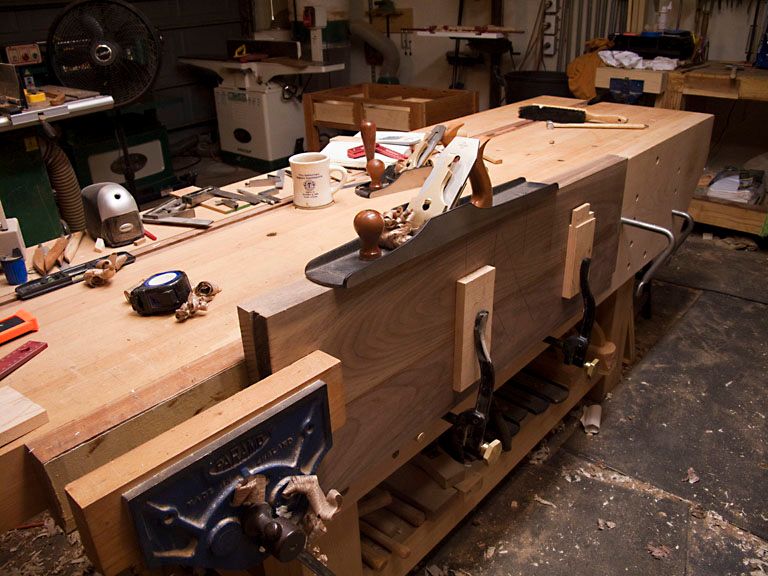I work in a Seniors Society Workshop where we use shared benches, 8' x 3 1/2'. We are about to replace one with a new roubo style bench. The plan is to have a laminated hard maple top (3 1/2" thick) and a douglas fir base (legs 5 1/2" x 3 3/4").
It's a wide top; to support it we hope 1/3/4" w. x 3 1/2" h. upper stretchers will do the trick.
Two 21" wide benches pushed together is a possibility but requires more wood/expense.
Has anyone else made a wide roubo style workbench?
What other concerns or ideas cross your mind?




 Reply With Quote
Reply With Quote







 I agree about the size of the bench. Just because the old bench is 42" doesn't mean the new one has to be…something more like 36" would be plenty big enough, and would allow a little extra floor space.
I agree about the size of the bench. Just because the old bench is 42" doesn't mean the new one has to be…something more like 36" would be plenty big enough, and would allow a little extra floor space.

